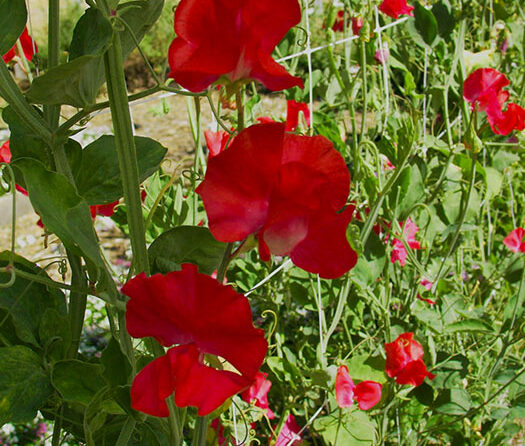By Diane Hyde
To plant a garden is to believe in the future. Believe those seeds will sprout and mature in reasonable time. Believe your effort will be rewarded. Believe, but be wise in helping it happen. The spring solstice signals time for new growth, time to plant for the growing season. The days will be getting longer, and hopefully warmer soon. It is unlikely, but not impossible, that we’ll see another hard freeze this season, so it is safe to plant most crops in a garden.
Transplants already grown to a healthy stage are available in garden stores. Although more expensive than planting seeds, direct planting of healthy starts than have been acclimatized to current temperatures will almost guarantee success. Direct sowing of seeds is less expensive (a whole package for the price of a pack of transplants), and will take two to four weeks longer to mature. If we believe in saving money for the future what do a couple of weeks matter?
To germinate and grow seeds need moisture and warmth. Moisture is not a problem as (cold) spring rains continue. Soil temperature is the key to seed starting success. Cool season vegetables grown mostly in northern hemisphere and higher elevations, and most perennial flowers will sprout in soils as cool as 40F. Many perennial flower seeds are designed by nature to sit in cold damp soil for weeks or months before sprouting so if they are sown now their hormones will let them sprout when the soil temperature is right. Warm season vegetables that originate from closer to the Equator, and more exotic flowers grown as annuals will not sprout until soil temperatures are warmer so they are often started indoors at 65-70F in our short-season microclimate. Even transplants of tomatoes and peppers purchased at the garden store will not grow well until soil temperatures (and night air temperatures) are above 50F. Corn, cucumbers and melons will not thrive below 60F. So we usually wait until late May to plant them. Covering raised beds with row cover cloth, an old sheet, of a makeshift clear plastic tent will help raise the temperature of a patch of soil by capturing sunlight and blocking wind. Good drainage helps prevent drowning and rotting of seeds in cold soggy soil. Soil should feel like a wrung-out sponge.
OSU Extension has great publications available to help gardeners. Growing Your Own (EM 9027) and Vegetable Gardening in Oregon (EC 871) are two basic sources of information available at Extension offices or https://catalog.extension.oregonstate.edu.
Believe in the future, but remember how to help garden PLANTs: Give them a good PLACE to grow, LIGHT at least six hours per day, AIR in the soil and a little wind, NUTRIENTS from compost and/or fertilizer, and TEMPERATURE of the soil.
